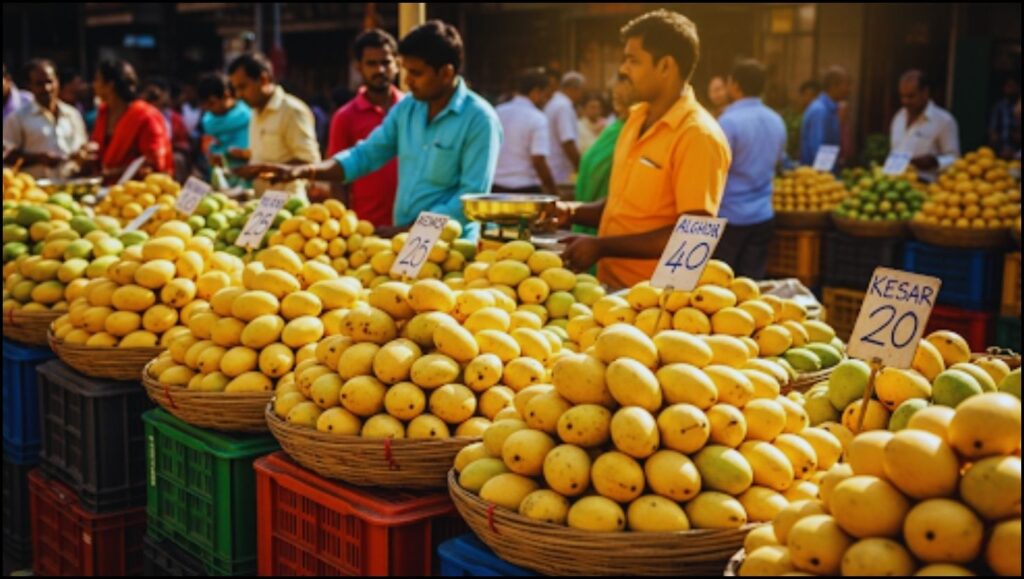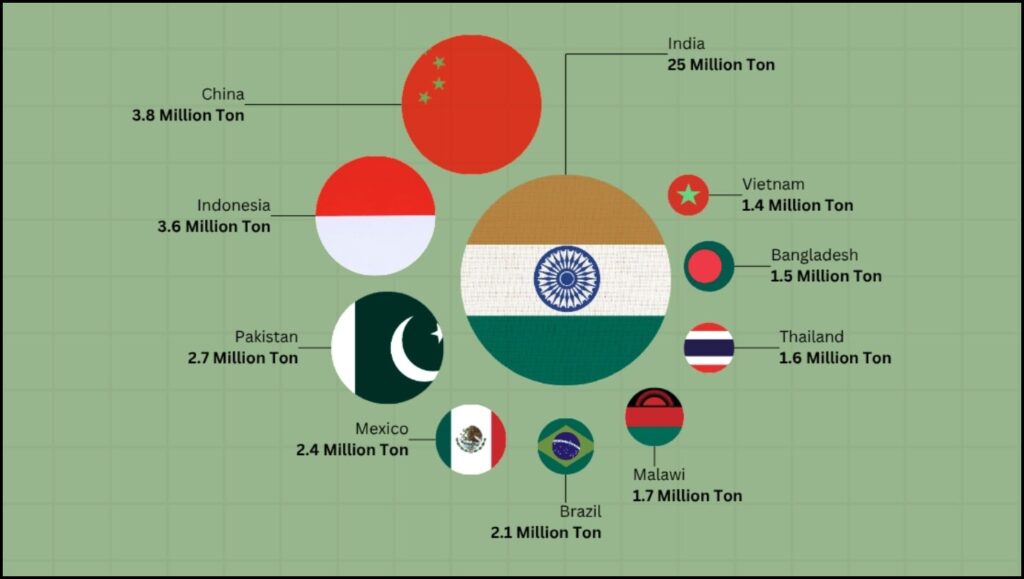
India has reaffirmed its long-standing position as the undisputed top producer of mango in the world, cultivating nearly half of the global supply. While the nation dominates production through its vast orchards and deep cultural affinity for the fruit, a complex picture of domestic consumption, export challenges, and climate vulnerabilities shapes its role in the global mango market.
Inside the Data on the World’s Top Producer of Mango
| Key Fact | Detail / Statistic |
| Top Producer | India |
| India’s Share | ~46% of total global production |
| Global Production (2022) | Approx. 59.5 million metric tonnes |
| Major Importers | United States, European Union, China |
India’s Overwhelming Dominance in Production
India’s connection to the mango is ancient, with a history of mango cultivation stretching back thousands of years. This legacy translates into staggering production figures. According to the latest available data from the Food and Agriculture Organization (FAO) of the United Nations, India produced over 27 million metric tonnes of mangoes, a figure that dwarfs the output of other leading nations.
This immense volume is driven by a combination of favorable agro-climatic conditions across the country and the cultivation of more than a thousand varieties, including world-renowned types like the Alphonso, Kesar, and Dasheri. However, a surprising paradox defines India’s market position. “While India is the largest producer, it is not the largest exporter,” noted Dr. Anand Kumar Singh, a former Deputy Director General of Horticulture Science at the Indian Council of Agricultural Research. A vast majority of India’s mangoes—well over 95%—are consumed domestically, where the fruit is a staple of the summer season and deeply embedded in the national cuisine and culture.

The Global Landscape of Mango Producers and Exporters
While India leads in volume, other countries play critical roles, particularly in the realm of mango exports. Following India in production are China, Thailand, Indonesia, and Pakistan, each contributing significantly to regional and global supplies.
Export Powerhouses Stake Their Claim
Countries with smaller production footprints, such as Mexico, Peru, and Brazil, have established themselves as export leaders. Mexico, in particular, is a dominant player in the international market, serving as the primary supplier of fresh mangoes to the United States.
“Logistics and market proximity are key drivers for export success,” explains a market analysis report from the Agricultural and Processed Food Products Export Development Authority (APEDA), India’s export promotion body. “Countries in Latin America have a significant geographical advantage in supplying the North American market, while India faces higher transportation costs and stricter phytosanitary regulations for its primary target markets in the U.S. and Europe.”
These regulations, which are designed to prevent the introduction of pests, often require specialized treatments like irradiation, adding complexity and cost to the export process for Indian producers.
Climate and Commercial Hurdles
The future of the global mango market faces significant challenges, primarily from climate change and supply chain inefficiencies. In recent years, mango growers in India and other parts of South Asia have reported crop losses due to unseasonal rains, extreme heatwaves during the crucial flowering stage, and increased pest attacks.
“The flowering and fruit-set period is extremely sensitive to temperature fluctuations,” said a horticulturist from the Uttar Pradesh Mandi Parishad, a state agricultural marketing board in India. “We are seeing more erratic weather patterns that directly impact our yields year after year.”
Furthermore, post-harvest loss remains a major concern across the developing world. The World Bank estimates that a significant percentage of horticultural produce is lost between the farm and the consumer due to inadequate storage, transportation, and cold chain infrastructure. Improving this infrastructure is a critical step for countries like India to not only feed their own populations more efficiently but also to increase their share of mango exports.
Efforts are underway to address these issues through the promotion of climate-resilient mango varieties, the adoption of modern mango cultivation techniques like high-density planting, and public-private partnerships aimed at strengthening supply chains.
The global demand for mangoes continues to grow as consumers in North America and Europe become more familiar with the tropical fruit. This growing appetite presents a significant opportunity for the top producer of mango and other nations, provided they can successfully navigate the climatic and logistical challenges that lie ahead.
